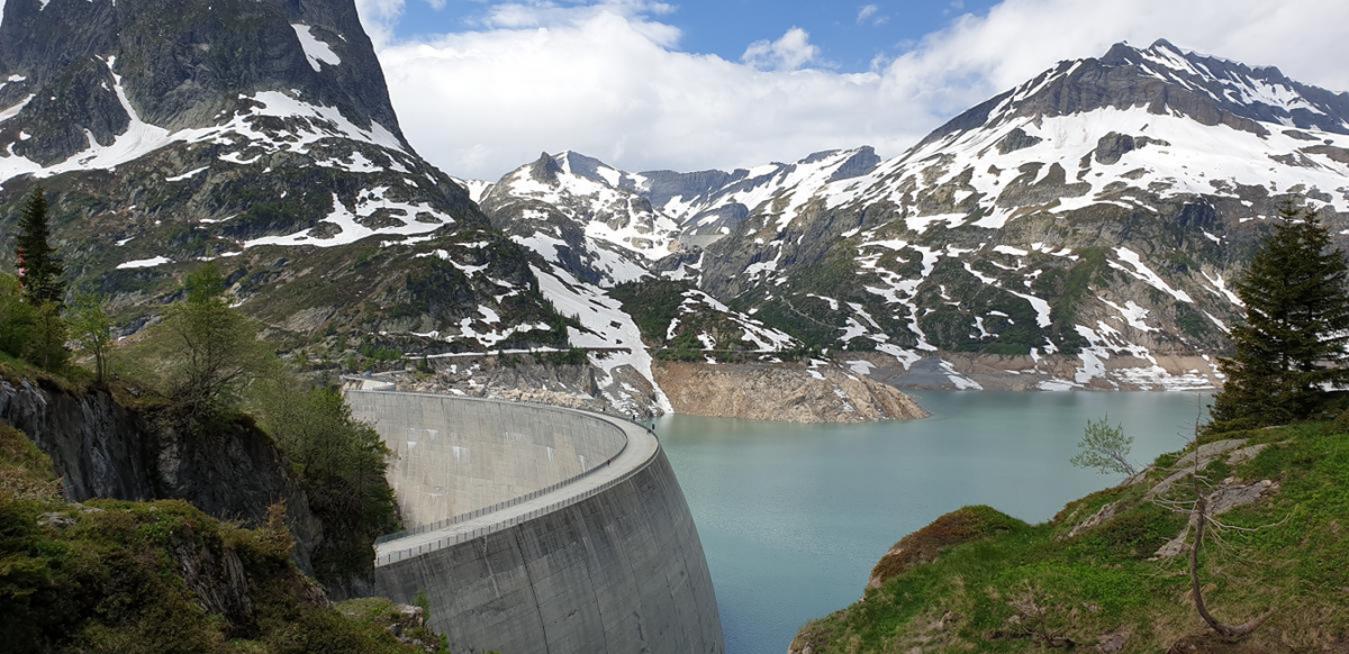WATER FALLS
Batteries are everywhere these days, but they don’t need to be small. Take, for instance, Nant de Drance, a very big new battery in the Swiss Alps consisting of two crystalline mountain reservoirs at differing elevations. When power producers are generating more electricity than is needed, Nant de Drance operators soak up that extra juice by pumping water into the upper reservoir. When demand for electricity spikes later on, that water is released to rush downhill through hydroelectric turbines — a virtuous cycle that can be endlessly repeated. Pumped storage technology is not new, but, aided by innovation, it’s gaining new currency as the world turns increasingly toward renewables.
Get pumped up: Solar and wind energy are central to many countries’ renewable energy goals, but they come with their own limitations — like cloudy and breezeless days. But grid operators need electricity at a moment’s notice to maintain the grid’s delicate balance of supply and demand. Nant de Drance’s pump turbines can start churning out as much as 900 megawatts in just 100 seconds; when the grid suddenly has more power than it needs, the facility can react nearly as quickly, taking just six minutes to go from producing power to pumping water back uphill to the higher reservoir. “It’s not really a power plant,” said GE project director Fabien Scheurer. “It’s really a switch.”
Given that it’s built into an Alpine massif, though — and being constructed during a global pandemic — it was a particularly challenging switch to engineer. Read more here about GE’s major Nant de Drance project.
SOUND SCIENCE
What’s the sound of an aircraft going supersonic? Soon it might be little more than a gentle thump — not the trademark boom typically associated with planes breaking the sound barrier. Last year the X-59 QueSST, designed by NASA and Lockheed Martin, made Popular Science’s list of 100 Greatest Innovations of 2019. With a pointy nose and swept wing, the QueSST — short for Quiet Supersonic Technology — was designed specifically to dial back the noise that planes create when they hit Mach 1, with hopes of returning such craft to the skies without disturbing the communities they’re flying over. In August, NASA took delivery of the first F414-GE-100 engine for the experimental plane.
Mission possible: GE developed a new variant of its tried-and-true F414 fighter jet engine to meet the X-59’s exacting performance and reliability needs: namely, the ability to accelerate and climb to a cruising altitude of 55,000 feet. Built and initially tested at GE Aviation’s facility in Lynn, Massachusetts, the engine is nearly 13 feet long and 3 feet in diameter, and can produce 22,000 pounds of thrust. “We’re going to need every pound of thrust that this engine can put out to complete this mission,” said NASA’s Ray Castner. The current timeline calls for NASA to test the X-59 starting in 2024 and share the findings with aviation regulators — with the aim of adjusting rules for noise levels, possibly opening a new era for commercial supersonic flight over land.
Learn more about the project here.
COOLEST THINGS ON EARTH ?
1. On The Rocks
In geology, the term “precariously balanced rocks” describes pretty much what it sounds like — and such PBRs, according to new research from Imperial College London, could help engineers assess earthquake risk in the areas where they’re located.
2. Another Earth
The European Union aims to create a “digital twin” of the entire planet, enabling scientists and policymakers to model climate change scenarios.
3. Tiny Breezes
Engineers in China designed a turbine-like “nanogenerator” that can “scavenge wind energy from breezes as little as those created by a brisk walk.”
Read more here about this week’s Coolest Things on Earth.
— QUOTE OF THE DAY —
“I’ve been 25 years in this business. When you see the power you can get and in such a fast time, it’s impressive.”
— Fabien Scheurer, project director at GE
Quote: GE Reports. Images: GE Renewable Energy.





